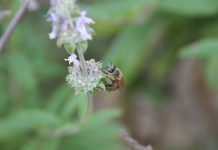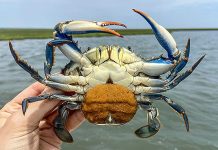
In an exciting scientific endeavor, an international team of researchers, led by Ariadna Mechó from the Barcelona Supercomputing Center—Centro Nacional de Supercomputación (BSC-CNS), embarked on an exploration of the underwater mountains off the coast of Chile.
This expedition, carried out in collaboration with the Schmidt Ocean Institute, revealed a vibrant array of marine life on the Salas y Gómez Ridge, a largely uncharted stretch running from Chile to Rapa Nui (Easter Island).
Remarkably, the team observed 160 species previously undocumented in the region, with at least 50 suspected to be completely new to science.
The Salas y Gómez Ridge is a 2,900-kilometer-long chain of underwater mountains and oceanic islands featuring over 200 seamounts.
This remote and underexplored area is not only a hotspot for unique and diverse marine life but also plays a crucial role in the migration of various marine species and serves as a vital habitat for many endangered organisms.
During the 40-day scientific cruise titled “Unexplored Seamounts of the Salas y Gómez Ridge,” researchers documented a wide range of species, including deep-sea corals, glass sponges, sea urchins, squids, fishes, mollusks, crabs, sea stars, and squat lobsters.
Among the significant findings was one of the world’s deepest mesophotic corals, extending the known distribution of Polynesian fauna by hundreds of kilometers.
The team also discovered extensive fields of sponges and corals at great depths, highlighting these areas as vulnerable habitats in need of protection.
The research cruise not only contributed to our understanding of marine biodiversity but also supported efforts to manage and potentially expand marine protected areas around Rapa Nui.
The findings are pivotal in informing the management strategies of these protected areas, ensuring the conservation of these unique ecosystems.
Ariadna Mechó presented these findings at the “Ocean Decade MPA Forum: Progress, obstacles and solutions,” an event organized as part of the UN Ocean Decade Conference in Barcelona.
This presentation underscored the critical need for the protection of these underwater landscapes, which are not only biologically rich but also culturally significant to Indigenous islander and mainland communities.
The BSC plays a crucial role in this environmental initiative by providing climate modeling data to predict how key species in the area might respond to various future scenarios.
This modeling is essential for understanding biodiversity and connectivity in the region, helping identify keystone species and their specific habitats, as well as potential faunal breaks—areas where community compositions change or connectivity ceases.
These efforts are aimed at supporting the designation of the Salas y Gomez Ridge as an ecologically and biologically significant marine area (EBSA) and as a priority area for international protection under the High Seas Treaty.
The discovery of over 100 new species during this and a previous campaign further emphasizes the urgent need for a “blue corridor” along the Salas y Gómez and Nazca Ridges, which could become one of the first and largest high-seas marine protected areas in the world.
This ambitious project not only sheds light on the unknown riches of our oceans but also paves the way for international cooperation in preserving these pristine and vulnerable habitats before they are irreversibly impacted.
The continued exploration and study of these regions are crucial for the sustainable management and conservation of our global marine environments.
Copyright © 2024 Knowridge Science Report. All rights reserved.



